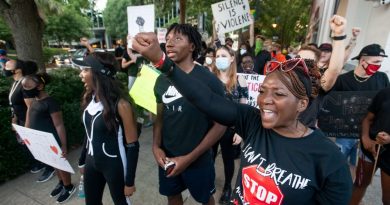Demand for Indigenous potash workers leads to tailor-made training program at Cowessess
A training program tailor-made for the potash industry and the Indigenous population has celebrated its first graduating class.
The course, called Digital Transformation in Potash Mining: Cowessess Edition, was designed after potash companies said they were having trouble recruiting Indigenous employees.
The students are considered employment-ready after eight weeks of classroom instruction in Cowessess followed by a two-week practicum at Mosaic’s K3 mine near Esterhazy.
In addition to basic mining and safety training, the students learned digital automation skills using high-end gaming computers.
Twelve students were chosen for the program from among 60 applicants across the Prairies from the Treaty 4, 5 and 6 territories.
The course is a partnership of the Cowessess First Nation, the Zagime Anishinabek First Nation, the Ochapowace Nation, the Kahkewistahaw First Nation, Mosaic, Morris Interactive and the International Minerals Innovation Institute.
Potential for economic reconciliation
Cowessess Chief Cadmus Delorme is excited about the program’s potential to develop long-term, treaty-based partnerships.
“Cowessess saw this as an opportunity for our generations now and our future generations to enter the potash mining industry,” he said. “Not just as shovel-holders, but as potential management and senior management, as well.”
Delorme has a vision of how this training program could result in economic reconciliation, specifically addressing the Truth and Reconciliation Commission’s calls related to economic participation and professional development and skills training on the history of Indigenous peoples.
“These companies have to learn the truth,” he said. “They have to make sure their policies, their frameworks, their mandates all reflect on what we all truly inherited.
“Once you combine [TRC Calls] 57 and 92 in this business of potash, you would see a huge impact in the First Nations and surrounding area.”
Better understanding of support needed for students
The program produced nine graduates after three students needed to drop out.
Delorme said course developers have learned in this first offering the support students need and how to address those needs.
He said they molded the program with the end goal of students being job-ready, but also identified that sometimes personal challenges might come up.
“But getting to the end goal, in a real situation — intergenerational trauma, experiences of residential school, family breakdown and mental and emotional support — that’s real,” he said.

Morris Interactive, a firm that helped design the program, said mental and emotional supports in this first offering were more about ensuring the students were connected with proper resources from each participating First Nation.
It said the desire moving forward is to build out a formal coaching and mentoring support program.
The company has described the course as “community-based skills training rooted in reconciliation and mutual respect.”
The customized content included cultural teachings delivered by Indigenous knowledge keepers and elders.
Course content scrutinized by Indigenous scholars
The company said the course content was peer-reviewed by industry partners and participating First Nations communities before being delivered, including some “very open feedback” from expert Indigenous reviewers that led to some rewrites of the course’s 300-page textbook.
CEO Mathew Cey said they engaged Indigenous scholars and other respected Indigenous thought leaders, and got advice on how to produce the best outcomes and experience for the students.
Cey said those discussions were key success factors for the program.
“The way we set it up is we recruited students from around the geographic area,” he said. “Ultimately, the jobs that they will be getting, and the careers, are from around the geographic area within a 75-kilometre radius.
“They could go to school from their home and sleep at home at night.”
Cey said the students have demonstrated they are job-ready, with many receiving multiple job offers before they graduated.
“There are some of the students who were getting up at 5 o’clock in the morning every day and driving 90 minutes there and back for eight weeks,” he said.
“Ninety minutes there, 90 minutes back.”
Earl Greyeyes, Mosaic’s Indigenous liaison, said his company provided accommodations for the students during their two-week practicum at the K3 mine.
Greyeyes said this course is addressing a need Mosaic has.
“We have a target of 15 per cent of all of our new hires in Saskatchewan will be Indigenous candidates by 2025,” he said.
Greyeyes said the training the graduates received will make them able to work for a number of companies, adding a lot of the equipment in potash mines is — and will be — automated.
“Speaking with the instructor, they are getting the next level of training,” he said. “A lot of the digital transformation automation is the wave that’s coming to the industry.”
Graduates in high demand
The graduation for the first batch of students took place last month in Broadview.
At last word, two graduates had already been hired — one by Mosaic at one of its mines near Esterhazy and another by a contractor at Nutrien’s Rocanville operation — and several other graduates were in the interview process.
Delorme, Cowessess’s chief, said the course instructors told him they got “so much energy” from the students in the program.
“I see a lot of confidence in these students when I see them,” Delorme said.
Called to Action: Stories of Reconciliation features individuals and groups across the province who are embracing the Truth and Reconciliation Commission’s Calls to Action. Themes range from language to justice, putting the spotlight on local efforts and the people leading them. Read more Called to Action stories here.

